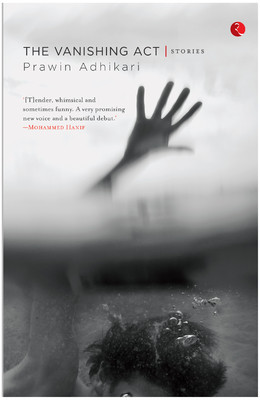Post-revolution Nepal is in a state of flux.
What happened? Why? What is happening in this country? This year, three English language writers who reported regularly during the People's War have come up with their first book. Pulled into the chaos, whether by happenstance, profession or personal choice, the texts they have produced are studied, authoritative accounts, must-reads for anyone vaguely interested in or associated with Nepal.
The primary thematic elements in these books - social commentary, political investigation and disciplined history - if taken together and read simultaneously, combine and complement each other. Issues overlap, ideas intersect so harmoniously that a uniquely comprehensive and novel image of Nepal emerges.
These works of art are produced by people who stood sentinel in Nepal during the past decade, a decade that ushered staggering changes. While many Nepalis left, these writers stayed. And they wrote. They sought to understand the country by going out of Kathmandu. During upheavals, they used their words to anchor themselves. When people spread rumors, they constructed sentences. When, at times, the public dropped any sense of logic and let themselves drift in uncertainty and fear, these writers used thought, intuition and passion to build an honest and truthful narrative. And it is their passion, more than anything else, that is palpable during the reading experience.
What follows are short introductions. This is not an attempt to review or categorize. To lock each book inside a generic box would be doing some kind of disservice to the writers, since their work is complex, each in its own way. I have merely provided a hypothetical compass and literary angles that could be used to view each book, specially for readers who might be interested to understand the country from specific personal perspectives.
Society: Kathmandu by Thomas Bell (Random House, India)
"I wanted to know every grain of the city's texture," writes Thomas Bell towards the beginning of Kathmandu. From trying to help a boy in a doctor's office to figuring out the complex socio-cultural connotations of the red Matsyendranath festival, in Kathmandu, you will find Thomas Bell uncovering, exploring, digging through and peeling multiple layers of Nepali society. You will see Bell knocking on doors, trying to track ancient documents, conversing with old grandmothers, searching for stone statues. Bell's writing is as intricate as the city itself. During the course of a few pages, you will find him leafing through historical books, commenting on local architecture, walking through rural Nepal trying to meet the Maoists, not letting us forget about what's happening in the country: "Three months after that, the chief of the Armed Police Force and his wife and bodyguard were killed..." A British journalist who came to Nepal in 2002 to cover the civil war, Bell now lives in Patan with his Newari wife and two children. Deeply felt, this inquisitive account will answer questions that many Nepalis may have about their own society. Interspersed with multiple references to travelers and researchers who passed through Nepal in the last century, aided by personal photographs and stories, this book is informative, engaging and a delight to read.
Politics: Battles of the New Republic by Prashant Jha (Aleph, India)
Numerous meetings with high placed political stakeholders and travels to the Terai are rich sources of material for Prashant Jha. Battles of the New Republic has mixtures of personal narratives and acute analysis. Using his own identity as a reference point (Jha is a Madhesi), bringing knowledge and experience from his reporting career (in Kathmandu) and network in India (he went to Jawaharlal Nehru University), Jha has woven a gripping political story by putting all the pieces together. In order to develop a thorough understanding of the shifts in strategies and allegiances of the different political pillars - the Maoists, the multiple democratic parties, the monarchy and Indian diplomats - during the post-conflict period, look no further than this book. At its launch in Kathmandu, former Prime Minister Baburam Bhattarai said that Battles should be translated into Nepali so that every Nepali can read it. Good news is, it is, and hopefully that will increase the readership of this book, and inform a larger section of the population.
History: The Bullet and the Ballot Box by Aditya Adhikari (Verso Books, London)
Adhikari's book is firmly grounded in ideology. In order to relay this 'Story of Nepal's Maoist Revolution,' Adhikari takes us back to the Panchayat days and explains the socio-political situation back then. Chapter One begins with these lines: "The Nepali monarch and the Chinese leaders of the 1960s were poles apart in their worldview." So what influenced the Nepali Maoist leaders? What were their beliefs? What were the course of their lives? Methodical, chronological and comprehensive, The Bullet and the Ballot Box elucidates key events - the Holeri attacks, the battle of Beni, the royal coup - and players - Maoist leaders, Gyanendra, lives of comrades such as Devi Prasad Dhakal, and the couple 'Nirmal' and 'Samikshya.' In fact, the chapter titled 'Among the Believers' helps readers understand the mindset and yearnings of the people in the People's War. The institution of marriage and its structure was radically adapted within the Maoist ideology. That example illustrates one of the progressive social goals of the Maoists. Launching in the US this Fall and in Nepal later in the year, the publishers' note on The Bullet and the Ballot Box states: "An indispensable guide to Nepal's recent history, the book also offers a fascinating case study of how communist ideology has been reinterpreted and translated into political action in the twenty-first century."
Humanity: The Vanishing Act by Prawin Adhikari (Rupa Publications, India)
To the triad above, I'm going to add Adhikari's collection of short stories as the fourth nautical angle that will assist anyone navigating through Nepal. While the three aforementioned writers help us understand the revolution, and Nepal, mainly through social, historical and political lenses, Prawin Adhikari provides a much-needed humanistic reference point, hence somewhat completing the picture. In The Vanishing Act, we meet Nepalis going about their Nepali lives, whether in Abu Khaireni (a rural town), Kathmandu (the capital), or California (emigrants). A man employed by the Marsyangdi dam project, a wife who loses her way in the streets of Naya Bazaar, a rebel, a young student in the West. We witness Nepalis being nostalgic, making plans, contemplating, thinking about their lives and about Nepal. Through his craft and imagination, Adhikari has attempted to build a vivid and detailed portrait of Nepal, acquainting us to all those lives, showing us our diverse population, the Nepali souls that breathe, laugh and cry. Adhikari's brilliant debut, which came out earlier this year, is integral to our country's cultural landscape.




